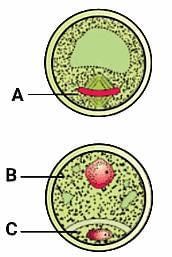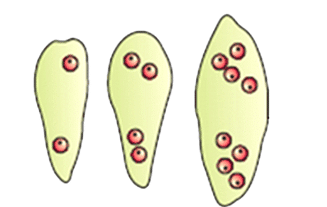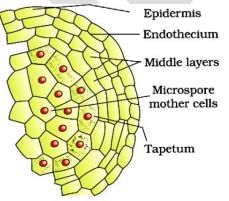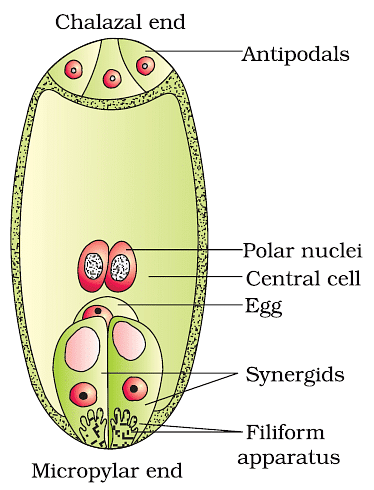Test: Pre Fertilisation: Structures & Events - NEET MCQ
10 Questions MCQ Test - Test: Pre Fertilisation: Structures & Events
Directions: In the following questions a statement of assertion (A) is followed by a statement of reason (R). Mark the correct choice as :
Assertion: The stigma serves as a landing platform for pollen grains.
Reason: The stigma is adapted with a sticky or receptive surface that helps capture and hold pollen grains for fertilization.
Identify A-D in the given enlarged view of one microsporangium showing wall layers:


Sporopollenin an organic material is present in:
Starting from the innermost part, the correct sequence of parts in an ovule are:
Match the terms on the Column I with their corresponding descriptions Column II:

Study the stages of maturation of microspore into a pollen grain and select the correct statements:

Statement I: The spindle formation as seen in A is strictly symmetric.
Statement II: The larger cell [B] is the generative cell and the smaller cell [C] is the vegetative cell.
Assertion: In monosporic development, all four megaspores produced from the megaspore mother cell (MMC) do not contribute to the formation of the female gametophyte.
Reason: Monosporic development results in the formation of four functional megaspores.
Select the correct statement about the following diagram -

Statement I: It shows the two, four, and eighth nucleate stages of the embryo sac.
Statement II: The divisions are mitotic and free nuclear.
Filiform apparatus is a characteristic feature of:
The female gametophyte in angiosperm is:



















